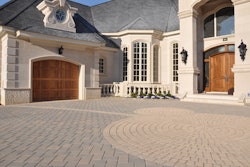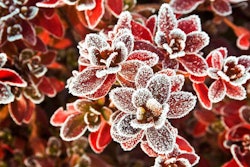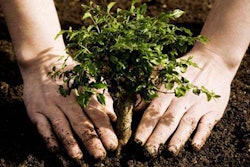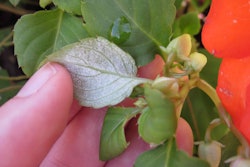 The Embassy of Canada in Washington, D.C.
The Embassy of Canada in Washington, D.C.I recently took a trip to Washington D.C., which happened to be my first trip to the historical city.
One thing that stood out to me, beyond the monuments and museums, was the amount of rooftop landscaping within the city itself.
Rooftop landscaping has definitely been a growing trend in major cities all across the world, but this was the first time that the landscaping actually caught my eye.
Construction plagues D.C. like most cities, and in the heart of our Nation’s capital, green space can be hard to find. However, each unique building, no matter how old or new, is finding new ways of captivating the green space.
For example, after standing on the Newseum balcony for a period of time, I could see the limbs of green trees and bushes coming down from the roof.
The Embassy of Canada also had a unique wall on one side where trees escalated all the way up to the roof.
In a city where you may think greenspace might be lacking, look again because you might be pleasantly surprised. I know I was.
Here are some benefits of green rooftops from GreenRoofs.org.
Waste Diversion
Green roofs can contribute to landfill diversion by:
- Prolonging the life of waterproofing membranes, reducing associated waste
- The use of recycled materials in the growing medium
- Prolonging the service life of heating, ventilation, and HVAC systems through decreased use
Stormwater Management
- With green roofs, water is stored by the substrate and then taken up by the plants from where it is returned to the atmosphere through transpiration and evaporation.
- In summer, depending on the plants and depth of growing medium, green roofs retain 70-90 percent of the precipitation that falls on them; in winter they retain between 25-40 percent. For example, a grass roof with a 4-20 cm (1.6 – 7.9 inches) layer of growing medium can hold 10-15 cm (3.9 – 5.9 inches) of water.
Moderation of Urban Heat Island Effect
- Through the daily dew and evaporation cycle, plants on vertical and horizontal surfaces are able to cool cities during hot summer months and reduce the Urban Heat Island (UHI) effect. The light absorbed by vegetation would otherwise be converted into heat energy.
- Green roofs can also help reduce the distribution of dust and particulate matter throughout the city, as well as the production of smog. This can play a role in reducing greenhouse gas emissions and adapting urban areas to a future climate with warmer summers.
Improved Air Quality
- The plants on green roofs can capture airborne pollutants and atmospheric deposition.
- The temperature moderating effects of green roofs can reduce demand on power plants, and potentially decrease the amount of CO2 and other polluting by-products being released into the air.










